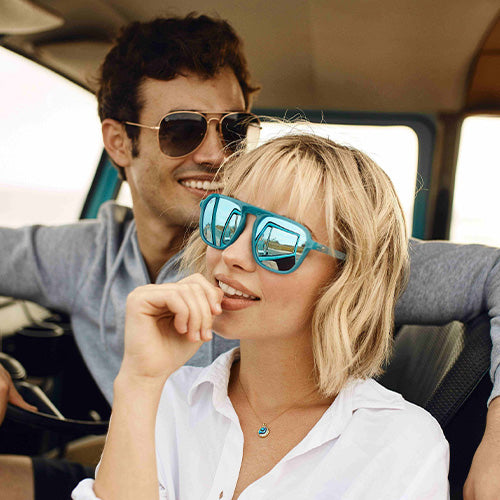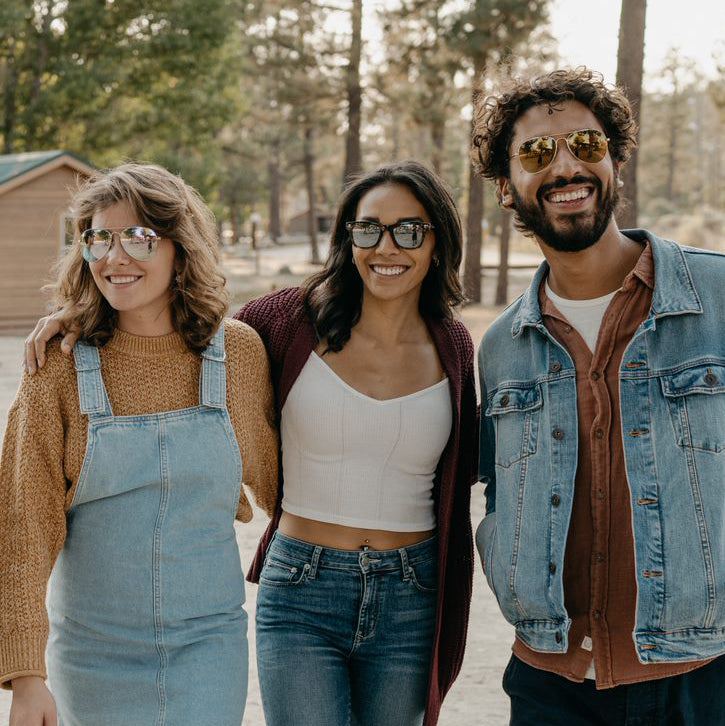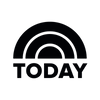You’ve probably heard about them. You may have seen someone wearing blue-light blockers while using a digital device, such as a phone or a tablet. But what are blue-light glasses? Let’s look at what they are, what they do, and why you may want a pair.
THE BLUE LIGHT IN OUR LIVES
It’s a fact: Today we spend more time than ever staring at electronic screens. We’re almost constantly connected with smartphones, computers, tablets, and digital devices of all kinds. And with this increased screen time comes increased exposure to blue light. The high-energy blue light that these digital devices emit can potentially cause eye strain, disrupt sleep patterns, and cause other issues. To combat these issues, blue-light glasses have emerged as a popular solution. Incorporating blue-light-blocking glasses into our daily routines could be a valuable bio-hacking tool as we navigate our increasingly screen-dominated lives.
Before exploring the “how” of blue-light glasses, it is important to understand the “why.” For that, we need to know: What is blue light, and how does it affect us? Blue light is a short-wavelength, high-energy light that is part of the visible light spectrum. It is emitted naturally by the sun and plays a vital role in regulating our circadian rhythm, keeping our crucial sleep-wake cycle in sync. Blue light also comes from artificial sources, including LED lighting and screens. And increased exposure to artificial sources of blue light can be problematic.
HOW MUCH BLUE LIGHT DO WE TAKE IN?
Americans spend a significant amount of time staring at screens each day. And daily screen time is particularly shocking for one group: remote workers. The Hill reports that remote workers spend about 13 hours looking at screens every day, citing a survey of 1,000 Americans. But work-related blue light exposure only accounted for part of daily screen time; survey respondents said they spent about six hours and 43 minutes looking at screens for work, an average of three hours and 21 minutes looking at their phones or social media, and two hours and 54 minutes watching television.
So what is the effect of all this screen time? A whopping 88% of people surveyed said they had visited an eye doctor over the past two years. Among the survey’s remote workers, 73% said they used blue-light blockers. And 67% of that sub-group said they had reduced eye strain thanks to blue-light glasses.
THE JOB OF BLUE LIGHT BLOCKERS
Blue-light glasses, also known as blue-blocking glasses, are designed to filter out or block a significant portion of blue light. These lenses have a special coating that absorbs and reflects a portion of the blue light spectrum while allowing other visible light to pass through. By reducing the amount of blue light that enters our eyes, blue light glasses aim to reduce eye strain and minimize potential damage to our retinas without affecting the clarity of our vision.
So what are the mechanics of blue light blocking? The tinted lenses let in light from the upper end of the visible spectrum, from green to red, and block light from the lower end, from violet to blue. The wearer can tell the glasses are working if they see things with a yellow-orange tint, as yellow and orange are the two colors in the middle of the range that the lenses allow to pass through to the eyes.
DO BLUE LIGHT GLASSES WORK?
It’s a fair question. Several studies have explored the impact of blue-light glasses on eye health and sleep quality. A randomized control trial conducted by the University of Houston found that participants who wore blue-light glasses experienced a significant decrease in eye strain symptoms compared to those without the glasses. Similarly, research published in the Journal of Adolescent Health discovered that wearing blue-light glasses in the evening led to improved sleep quality and reduced self-reported sleepiness the following day.
While not exhaustive nor conclusive, a systematic review published in Frontiers in Physiology supports the effectiveness of blue-light glasses. Research has uncovered that blue light exposure at night disrupts the production of melatonin, a hormone that regulates our sleep-wake cycle. By wearing blue light-blocking glasses well before bedtime, the amount of blue light reaching our eyes is significantly reduced, allowing our body to produce adequate melatonin and thus promoting restful sleep.
Moreover, studies have also indicated that blue light can lead to eye strain and fatigue, commonly known as Computer Vision Syndrome (CVS). By donning blue-light-blocking glasses, the intensity of blue light reaching the eyes is reduced, leading to potential relief from eye strain symptoms such as dryness, blurred vision, and headaches. This can be particularly beneficial for people who spend long hours in front of screens or in challenging lighting conditions.
The blue light emitted by electronic screens can be detrimental not only to our sleep patterns and eye health but also to our overall well-being. Findings published by the University of California, Davis indicate that prolonged blue light exposure is associated with an increased risk of chronic diseases such as diabetes, obesity, and cardiovascular problems. Advocates of blue-light glasses suggest that they can reduce eye strain and potentially improve sleep quality, especially when worn in the evening or before bedtime.
BLUE LIGHT GLASSES AND SLEEP
Researchers at Columbia University conducted a randomized controlled study to examine the connection between using light-emitting electronic devices before bedtime and sleep problems. They theorized that wearing amber-tinted blue-light-blocking glasses before bedtime would improve sleep for people who suffer from insomnia.
During the study, participants with insomnia wore blue-light-blocking glasses for two hours immediately before bedtime for seven consecutive nights. A control group of participants with insomnia wore clear placebo lenses. The results? Participants who wore blue-light blocking glasses fell asleep faster, slept longer, and had an overall higher quality of sleep compared to the control group.
Researchers reasoned that the blue light blockers reduced the suppression of melatonin, which happens when people are exposed to blue light. The study concluded that blue-light-blocking glasses “represent a safe, affordable, and easily implemented therapeutic intervention for insomnia symptoms.”
BLUE LIGHT GLASSES WITH TIMELESS DESIGNS
Perfect for people with larger and medium-sized faces, blue-blocking Fast Lanes are durable, lightweight, and have embedded rubber nose pads, so you’ll never have to worry about them slipping from your face. Rectangular lenses give these glasses a clean-cut look and understated tone that take on the personality of the wearer, making them at once stylish and practical.
Sure, you’re not likely to encounter extreme conditions while working at your computer or scrolling through your phone. But isn’t it nice to know that your blue-light blockers could take the beating if you did? Named after the near-impregnable depository for U.S. gold reserves, Fort Knocks glasses are as tough as they are comfortable. With amazing versatility! These unisex shades have a classic design and timeless style that looks great on pretty much every person in every situation.
Speaking of classic, there’s another pair of Knockarounds that exude timeless style: Classics. The name might sound a little on-the-nose, but one look at these glasses and you’ll know it’s true. As they appear quite modern, you may not know that these blue-light-blocking glasses are based on a design popularized by open-road adventurers over a century ago. With a subtle arched top and gently rounded bottom, this design will almost certainly be in style a century from now. And because they’re Knockarounds, they’ll almost certainly last that long!
BLOCKING BLUE LIGHT WITH EFFORTLESS STYLE
There’s a good chance you already look casually cool while scrolling through your phone. So why not get blue-light glasses to match? With a design that draws inspiration from its namesake town in Central California Wine Country, Knockaround Paso Robles offer a laid-back vibe that’s at home just about anywhere. A sculpted frame, rounded corners, and contoured lenses combine to create a down-to-earth feel that’s as easygoing as a fine, smooth vintage.
Are you a sophisticated scroller? If so, you may want to check out a pair of blue-blocking Mary Janes. Slender wire arms and retro-rounded lenses give these glasses a distinctive feel that never veers into formality. Flattering for small and medium face shapes, Mary Janes are a smart choice for virtual meetings and are always up for adventures outside of work hours.
There’s just something about a tropical cocktail that embraces the fine art of relaxation. And we’ve captured that essence with Mai Tais, glasses that are at once relaxed and sophisticated. With a slimmed-down frame, a rounded silhouette, and just a pinch of flair, Mai Tais effortlessly go from work to play and everywhere in between.
Digital devices and the effects of blue light they produce aren’t going anywhere, anytime soon. It’s more likely that our screen time will increase in the coming years, making eye protection all the more important. If you’re looking for blue light glasses benefits, we’ve got the right blue-light-blocking glasses for you.
Written by William McCleary for Knockaround.
















Why Are Sunglasses So Expensive?
Best Road Trip Accessories